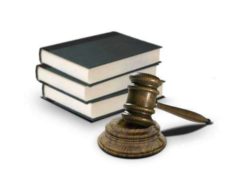Table of Contents

Introduction
Since the founding of the United States, the issue of religion has been a source of tension and debate. On one hand, the country was founded on the principles of religious freedom and the separation of church and state. On the other hand, religion has played an important role in American society and culture. Over the years, the Supreme Court has tackled many cases involving religion, including the establishment of religion. In this article, we will explore the Supreme Court establishment of religion in detail.
The First Amendment and the Establishment of Religion
The First Amendment of the United States Constitution states that “Congress shall make no law respecting an establishment of religion, or prohibiting the free exercise thereof.”
The Establishment Clause is the part of the First Amendment that prohibits the government from establishing an official religion. The Free Exercise Clause is the part of the First Amendment that guarantees individuals the right to practice their religion without government interference.
The Supreme Court has interpreted these clauses in many cases over the years, and these interpretations have shaped American law and society. The Establishment Clause, in particular, has been the subject of much debate and controversy.
The Lemon Test
One of the most important cases involving the Establishment Clause is Lemon v. Kurtzman (1971). In this case, the Supreme Court established a three-part test (known as the Lemon Test) for determining whether a law violates the Establishment Clause.
The Lemon Test states that a law must:
1) have a secular purpose;
2) not have the primary effect of advancing or inhibiting religion; and
3) not result in excessive government entanglement with religion.
This test has been used in many cases since then, and it has helped to clarify the Supreme Court’s position on the Establishment Clause.
Prayer in Public Schools
One of the most controversial issues involving the Establishment Clause is the use of prayer in public schools. This issue was first addressed by the Supreme Court in Engel v. Vitale (1962), in which the Court ruled that an official school prayer was unconstitutional.
Since then, the Supreme Court has continued to strike down laws and practices that promote or endorse religion in public schools. For example, in Santa Fe Independent School District v. Doe (2000), the Court ruled that a school district’s policy of allowing student-led prayers at football games was unconstitutional.
These cases have been controversial, with some arguing that they violate the rights of religious individuals and groups. However, the Supreme Court has consistently held that the Establishment Clause requires separation of church and state in public schools.
The Ten Commandments
Another controversial issue involving the Establishment Clause is the display of the Ten Commandments in government buildings. In recent years, there have been many cases and debates about this issue.
In McCreary County v. ACLU (2005), the Supreme Court ruled that the display of the Ten Commandments in a Kentucky courthouse was unconstitutional because it had a primarily religious purpose. However, in Van Orden v. Perry (2005), the Court ruled that a Ten Commandments monument on the grounds of the Texas State Capitol did not violate the Establishment Clause because it had a secular purpose and did not endorse any particular religion.
These cases illustrate the complexity of the Establishment Clause and its application in real-world situations.
Government Funding of Religious Organizations
Another issue involving the Establishment Clause is the government funding of religious organizations. This issue has been addressed in many cases over the years, with the Supreme Court offering different opinions and interpretations.
For example, in Lemon v. Kurtzman (1971), the Court ruled that a state law that provided funding to religious schools violated the Establishment Clause because it had the primary effect of advancing religion.
However, in Zelman v. Simmons-Harris (2002), the Court ruled that a school voucher program that included religious schools did not violate the Establishment Clause because it was neutral and did not favor one religion over another.
These cases show the importance of the Establishment Clause in government funding of religious organizations, and the need for careful consideration and interpretation of the law.
Conclusion
The Supreme Court establishment of religion has been a complex and controversial issue throughout American history. The Establishment Clause has been the subject of much debate and interpretation, with the Court offering various opinions on its application in real-world situations.
Cases involving prayer in public schools, the display of the Ten Commandments, and government funding of religious organizations illustrate the complexity of the Establishment Clause and its relevance to modern society.
Despite the controversy and disagreement, the Supreme Court has consistently maintained the separation of church and state, and the protection of religious freedom for all individuals.
The topic of religion is of big interest to many Americans today. There are so many forms of religions that exist in the increasingly liberal world. Contrary to what many people believe, the Constitution applied the view of religion in its original document. Many issues regarding the Government and religion indirectly coincide. As the American nation we are sums off all parts of religion and faith practices.
The establishment of religion in the Constitution started with the Bill of Rights.The Bills of Rights applying to each State suggest that each individual should be able to enjoy those rights regardless of any contradictory laws. In 1789, Representative James Madison gave a speech to the Court, introducing a series of articles to the Amendment. One of his beliefs addressed religious freedom. In this document he expressed that civil rights by no means should be shortened on account of religious beliefs and worship.
Establishment of religion should not be held on a national level and the doctrine also emphasized that no equal right of pure conscience be intruded on. The proposal of James Madison followed many of the State practices that already operated off an establishment of religion. In New York, the State law regarding religion declares that people have a natural right to declare their religion and that no religious section or society should be held in higher accordance with another. In Virginia, the law according to religion states that religion was subject to a person’s desire and religious beliefs could not be forced, giving all men the right to exercise their religious beliefs accordingly.
All of the rights of religious practices expressed by James Madison lead to the religious clause now found in the First Amendment. The 1st Amendment prevents the establishment of a national religion, as well as protecting the rights of individuals who choose to practice religious beliefs.When the Bill of Rights were first implemented it had no governance over individual states and how they choose to treat its churches.
The Bill of Rights only applied to the Federal Government.The states were free to implement their own establishment of religion. Each State was allowed to govern how church taxes were paid and the requirement of church attendance.
The establishment of religion implemented the Free Exercise Clause to the Bill of Rights. The Clause was accompanied by the Establishment Clause in the First Amendment. Together these clauses identified that Congress could not make a law respecting an establishment of religion or prohibiting the free exercise of religion. These clauses within the Bill of Rights were made to protect individuals with religious beliefs. Citizens were given the freedom to express their religious views and practice worship. It also was a measure of protection for those who may not have a religious belief from being forced to adopt a religion. Free Exercise Clause and the Establishment Clause prevents the issue of religion from having a forceful impact on a nation like it is in other foreign countries. The establishment of religion is the basis of the Bill of Rights.


























